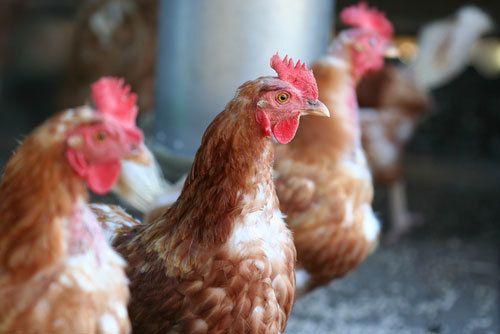New Bird Flu Virus: 6 Things You Should Know

A new strain of bird flu in China has sickened nine people, including three who died, according to news reports.
Two of the deaths were in Shanghai, and one in the Zhejiang province, the BBC says.
Here are six things to know about this new bird flu strain, called H7N9:
Has there ever been an outbreak of this H7N9 flu strain in the past?
No, before these cases in China, the H7N9 flu strain was not known to cause illness in humans. The strain has mainly been seen in birds.
Most strains of bird flu do not infect people, although the H5N1 flu strain has caused more than 600 human illnesses in 15 countries since 2003, according to the Centers for Disease Control and Prevention.
Have similar strains infected people?
Sign up for the Live Science daily newsletter now
Get the world’s most fascinating discoveries delivered straight to your inbox.
Strains from the H7 family of flu viruses have caused more than 100 cases of human infection in the past decade, according to a recent study in the Journal of Virology. A 2003 outbreak of the H7N7 strain in the Netherlands caused 89 infections and one death, according to CNN.
The "H" and "N" in the virus' name refer to proteins on the surface of the virus, called the hemagglutinin and neuraminidase. There are 16 types of hemagglutinin and nine types of neuraminidase that can come in pretty much any combination, said Dr. Richard Webby, a bird flu expert and infectious disease researcher at St. Jude Children's Research Hospital.
What symptoms do people with H7 flu infections have?
Three of the people infected in China experienced respiratory tract infections that progressed to pneumonia and breathing problems, according to the World Health Organization.
Many of H7 flu virus infections seen in the past caused conjunctivitis (or eye infections) that were not transmissible between people, Webby said.
Does the H7N9 virus spread person-to-person?
At this time, there's no evidence that the new H7N9 strain spreads between people, WHO says. The first three cases, which occurred in Shanghai and China's Anhui province (both near the country's east coast), did not appear to be connected, and people in close contact with those who got sick were not found to be infected. An investigation into the source of the infection is ongoing, WHO says.
One infected woman reportedly worked with poultry, according to CNN.
A concerning feature of the virus is that it has a genetic marker thought to increase the likelihood that it can infect humans, Webby said. It's possible this marker only shows up once the virus infects people. But if viruses in the animal population have this marker, then we could expect to see a lot more cases, Webby said. However, this marker is likely not sufficient to allow the virus to transmit between people, Webby said.
How is the virus spread if it's not person-to-person?
It's likely that the H7N9 has a source population, but whether that population is birds or another organism remains to be seen. "There's a lot of something infected with it," Webby said, and a small percentage of cases are hopping over to humans.
What will health officials look for in the coming weeks?
Besides trying to identify the source of the virus, health officials will be looking for more cases, Webby said. The cases we're seeing now may be on the extreme end of the spectrum, in terms of symptom severity, and there may be more people with less severe infections, Webby said.
This story was provided by MyHealthNewsDaily, a sister site to LiveScience. Follow Rachael Rettner @RachaelRettner. Follow MyHealthNewsDaily @MyHealth_MHND, Facebook & Google+.

Rachael is a Live Science contributor, and was a former channel editor and senior writer for Live Science between 2010 and 2022. She has a master's degree in journalism from New York University's Science, Health and Environmental Reporting Program. She also holds a B.S. in molecular biology and an M.S. in biology from the University of California, San Diego. Her work has appeared in Scienceline, The Washington Post and Scientific American.











